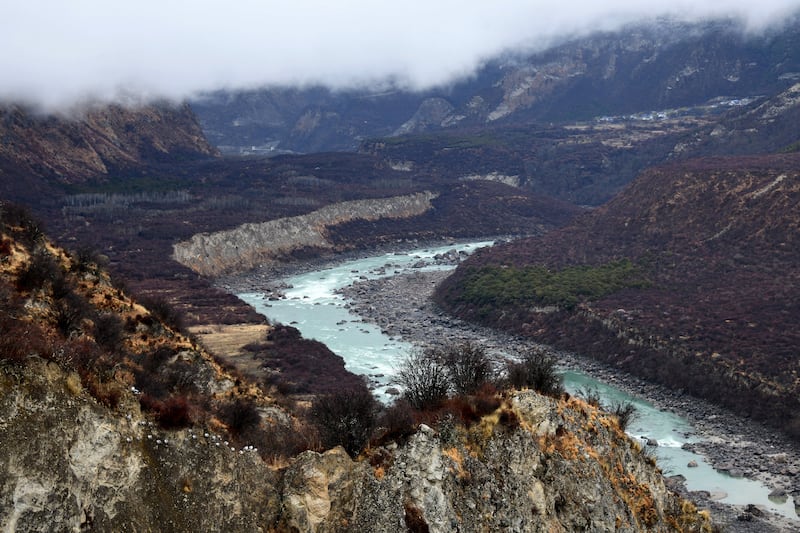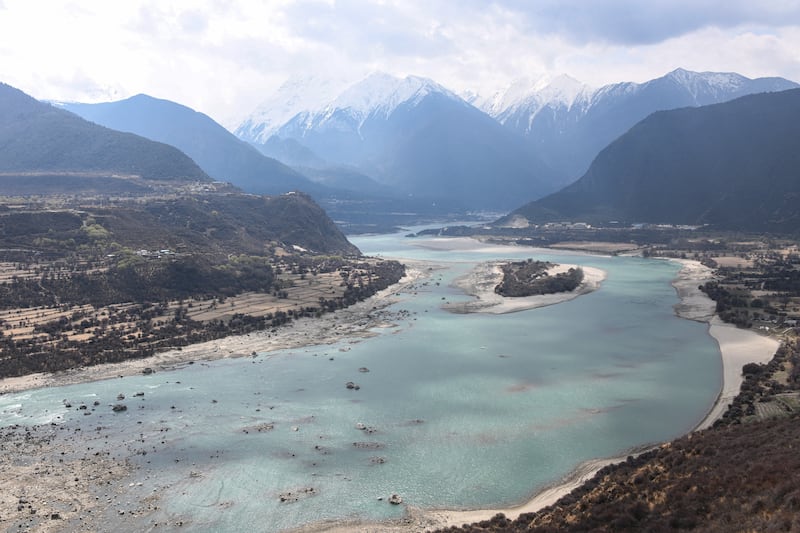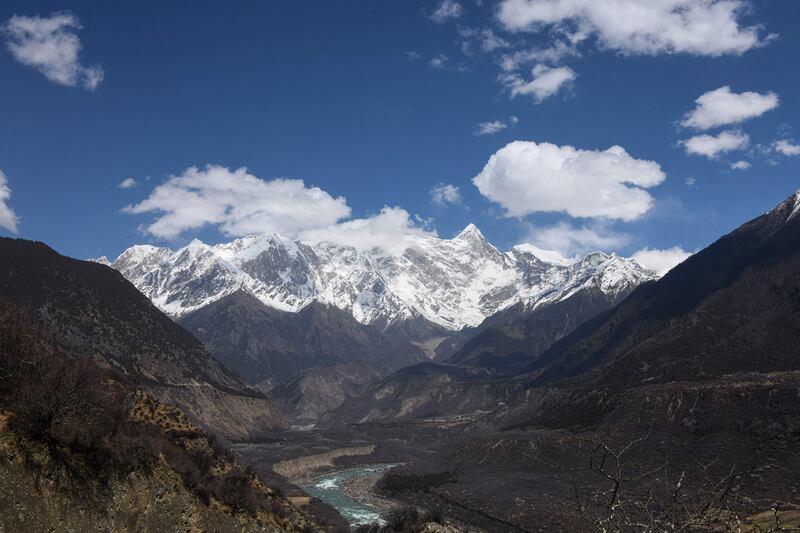BANGKOK – The focus of China’s sprawling hydropower industry is increasingly shifting to Tibet, according to researchers and a Tibetan advocacy group’s study, highlighting the potential for unrest and environmental damage in a region that Chinese officials have long viewed as a source of resources for the industrialized east.
China has built an estimated 22,000 large dams – about 40% of the world’s total – to help power several decades of rapid industrialization and economic growth, maxing out the hydropower potential of many rivers. The exception has been the Tibetan plateau.
The roof-of-the-world region, invaded and annexed by China in the middle of the last century, is the headwaters of major rivers in Asia and home of Himalayan glaciers that are a source of water for hundreds of millions of people.
It has about 110 gigawatts of untapped hydropower potential that could fuel the economy of China’s east, a researcher said, citing government figures. A single gigawatt is enough power for 100 million light bulbs.
In 2013, academic Tashi Tsering catalogued a total of 114 dams either built on three major rivers in Tibet or proposed for them.
A decade later, the number of constructed and proposed dams is at least 193 and probably much higher, according to a two-year desktop research project carried out by International Campaign for Tibet, or ICT, a Washington-based group that campaigns for Tibetan self-determination.
Globally, the hydropower industry promotes dams as an environmentally friendly energy source without the drawbacks of volatile wind and solar power. However, dams often impose significant costs such as eviction of communities, destruction of fisheries and impoundment of sediments that fertilize river deltas while only benefiting the narrow financial interests of dam builders and operators.

China’s long-term plans to divert major rivers are also contentious and have faced domestic criticism from some Chinese engineers. If ever carried out, diversions could also inflame tensions with India since some of the plans affect transboundary rivers.
ICT’s research is framed by a political agenda and it refers to Tibet as occupied by China. No country recognizes Tibet as a sovereign state. Experts not involved in the research had mixed opinions of its quality.
‘Justified concern’
Two said the findings were plausible. One expert on hydropower in China had several criticisms including the methodology for estimating potential populations affected and that it failed to sufficiently differentiate between dams built for hydropower and other purposes such as water supply and flood control.
The research, this expert said, has a focus on China whereas the rapid pace of hydropower development in the entire Himalayan region including India, Bhutan and Nepal is more pertinent.
This expert did not want to be named in relation to the ICT report as they feared it could result in denial of permission to carry out research in China.
ICT compiled publicly available information on proposed and already built dams in Tibet and analysis of satellite imagery to arrive at its figures. Using population data for locations where dams are planned, it estimated that between 750,000 and 1.5 million people could be forced to relocate if all of the dams are built.
The group said Chinese authorities have obfuscated the true extent of hydropower ambitions in Tibet because the plans attract “justified concern and scrutiny from environmental experts, local communities and downstream countries.”
The long-term nature of the plans means there are still opportunities for authorities to rethink the current “destructive” course, according to ICT. Nearly 60% of the dam projects it counted have not begun construction.

Plans for a 1,100 megawatt hydropower dam in a Tibetan county of Sichuan province adjacent to Tibet that will reportedly submerge six Buddhist monasteries sparked a rare public protest last year and drew renewed international attention to China’s rule of the region.
“Tibet will likely see the most dramatic and highly problematic rise in hydropower development,” said Sabrina Habich-Sobiegalla, a professor at Berlin Free University’s Institute of Chinese Studies.
“China’s southwest is currently the world’s largest hydropower hotspot in terms of capacity and number of projects with development already advanced in Sichuan and Yunnan,” she told Radio Free Asia.
“Because many downstream parts have already been exploited, development is shifting upstream and into Tibet,” Habich-Sobiegalla said.
‘Hidden interests’
In December, China’s state news agency Xinhua reported the government had approved plans to build the world’s largest hydropower dam in Tibet. The proposed Medog dam on the Yarlung Tsangpo River, which flows into India and Bangladesh, would generate three times the power of China’s controversial Three Gorges Dam. It is unclear when construction would start.
China’s hydropower plans are consistent with its push to reduce reliance on fossil fuels, Habich-Sobiegalla said. President Xi Jinping’s high-profile support for those goals means officials “will do whatever it takes to achieve them – even if only on paper – but even better for them if they can show large infrastructure projects.”

Aside from climate goals and other factors driving power demand, authorities in China have long viewed its west as a source of resources for the east, where population and industry is concentrated, said Emily Yeh, a geography professor and Tibet researcher at University of Colorado Boulder.
More broadly, the gargantuan electricity requirements of artificial intelligence including chatbots such as ChatGPT and pervasive cloud-based computing mean electricity demand will only keep increasing, she told RFA.
RELATED STORIES
China approves construction of mega-dam in Tibet
EXCLUSIVE: Area where Buddhist monastery stood now under water
US coordinator highlights Tibet’s role as regional freshwater source
Researchers such as Tsering, a lecturer at Calgary’s Mount Royal University, have likened China’s hydropower industry and dam builders to the U.S. military-industrial complex due to their enormous economic influence and deep political connections.
In an April 2024 seminar, he said China’s dam builders have hijacked the state to further their own interests.
A disaster that upends tradition, ancient culture and the environment is looming for Tibet unless Tibetans and Chinese discover that protecting Tibet’s ecology is an important common ground, Tsering said.
“Tibet’s hydropower development plans and the hidden interests of China’s water industrial complex are unknown to most people, particularly Chinese people and leaders,” he said.
“If this trend continues, Tibet will soon be home to hundreds of new big dams and many water diversion projects.”
Edited by Mike Firn and Taejun Kang.
